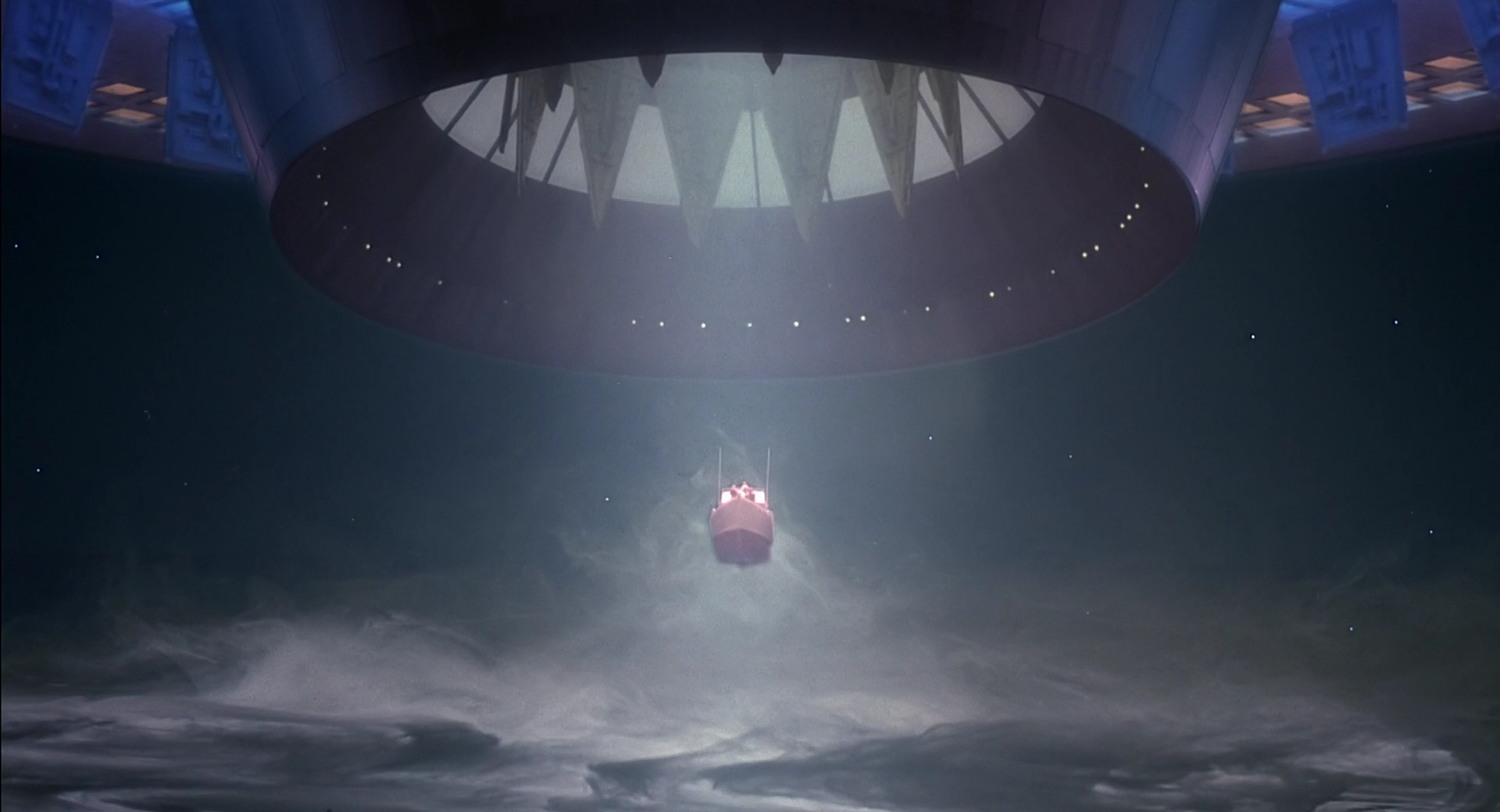Setting sail on a clear sunny day in late June 1900, Capt. J. Sidley, along with his 12-year-old son, Vessy, left Rochester, N.Y., aboard the 100-foot schooner Picton. With a crew of five and a cargo of coal bound for Belleville, Ont., the ship picked up speed heading across Lake Ontario.
A strong wind took the topsail off the Picton, and two following ships saw her suddenly vanish, as if being sucked to the bottom of the lake. When they reached the Picton’s last position, all that remained was a sailor’s cap and some floating deck debris. No trace of the ship or her crew was found until weeks later, when a boy discovered a bottle bobbing in the waters off Sackett’s Harbour, N.Y., at the extreme eastern end of the lake.
The bottle corked and sealed with wrapped wire, there was a note inside, scrawled in pencil: “Have lashed Vessy to me with heaving line so will be found together. -J. Sidley, Picton”.
This is the story as told by a plaque inside the Mariners Park Museum across the lake in Prince Edward County, Ont.
Along with the tales of countless other lost ships, the story of the ill-fated Picton is part of a local legend known as the Marysburgh Vortex, an area of eastern Lake Ontario that has claimed more than 100 vessels over the past two centuries, defying explanation. Bizarre tales of ships and their crews disappearing have been attributed to the Marysburgh Vortex.
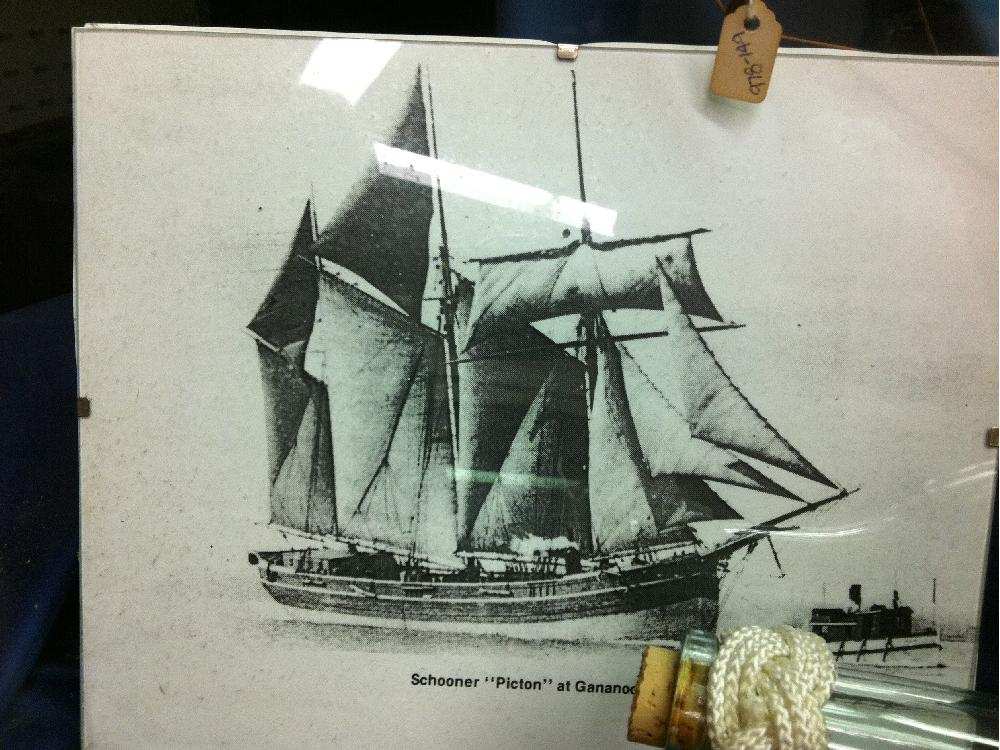
Having lived on these shores for most of my childhood and grown up with the legend, I decided to take a closer look at this “Bermuda Triangle of the North” to see what could be behind this enduring folklore.
Plying the waters of the Marysburgh Vortex while sailing with my family, I had seen the erratic movements of our boat’s compass, along with terrifyingly swift changes in weather. Navigational charts become a trusted aid in making your way through these unpredictable waters, and on them is a warning: “Magnetic Anomaly: Anomalies in the variation of the compass readings may range from 27 degrees west to 3 degrees east.”
The magnetic anomaly of this area, and in other parts of the world, had both the Canadian and U.S. governments looking into magnetic field disturbances under a program code-named Project Magnet. Initiated in 1950, Project Magnet was established by the Canadian Department of Transport, the Defence Research Board and the National Research Council (NRC) to try to determine characteristics of the Earth’s magnetic fields.
A similar U.S. study, also codenamed Project Magnet, started a year later, and, according to the website of the National Geophysical Data Center, “The U.S. Navy, under its Project Magnet program, continuously collected vector aeromagnetic survey data to support the U.S. Geospatial-Intelligence Mapping Agency.”
This U.S. navy-led program continued operations until 1994, researching the nature of Earth’s magnetic fields using Lockheed Constellation aircraft equipped with highly sensitive electro-magnetic sensing equipment. The findings from this 60-year Project Magnet study, according to the NGDC, were assembled to simplify the work of scientists performing regional and global geophysical studies, including research into the nature of Earth’s magnetic field.
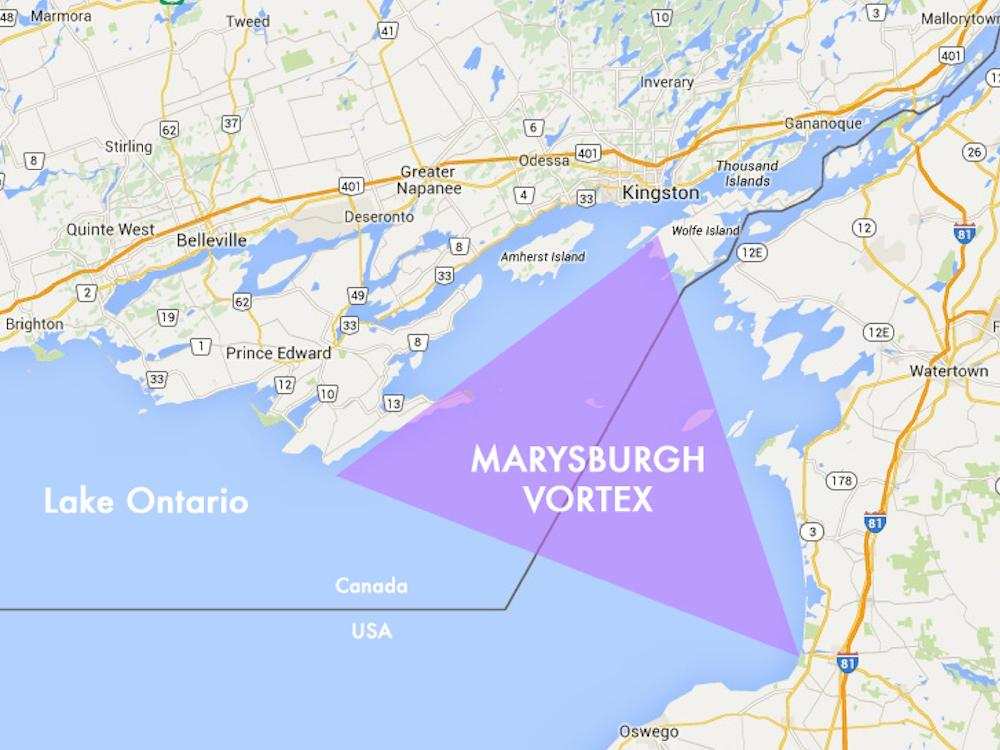
Looking at a current marine navigational chart of the area, there is a noticeable and unusual ring-like feature that could provide an explanation for these odd magnetic anomalies. Noted as Charity Shoal, 25 kilometres south of Kingston, it is clearly visible on the bottom of the lake beneath the Marysburgh Vortext.
Charted at a depth of 25 feet, the shoal is one kilometre in diameter, almost perfectly circular. It was recently studied by the National Geophysical Data Centre and the National Oceanic and Atmospheric Administration (NOAA). The NGDC study reveals the following:
“A small equidimensional circular depression 1000 meters in diameter, with a continuous encircling rim, coincides with the feature referred to as Charity Shoal on nautical charts. An elongated ridge extends southwest from the feature, resembling the tail of a crag-and-tail feature common to some drumlin fields. The basin is slightly deeper than 18 meters and the rim rises to depths of 2-6 meters. The origin of the feature remains unknown. Although a sinkhole in the limestone terrane is a possibility, an origin related to a meteor crater, that was subsequently glaciated, seems more likely. Aeromagnetic mapping by the Geological Survey of Canada revealed a negative magnetic anomaly over Charity Shoal, which is a characteristic feature of simple impact craters.”
The Charity Shoal Structure (CSS) was studied even more recently, in 2013, by the Universities Space Research Association, an independent, non-profit research corporation that completed a comprehensive study of the ring shape. I obtained a copy of their research document, which states, “The origin of the CSS is uncertain but it has been interpreted as an Ordovician age meteorite impact.”
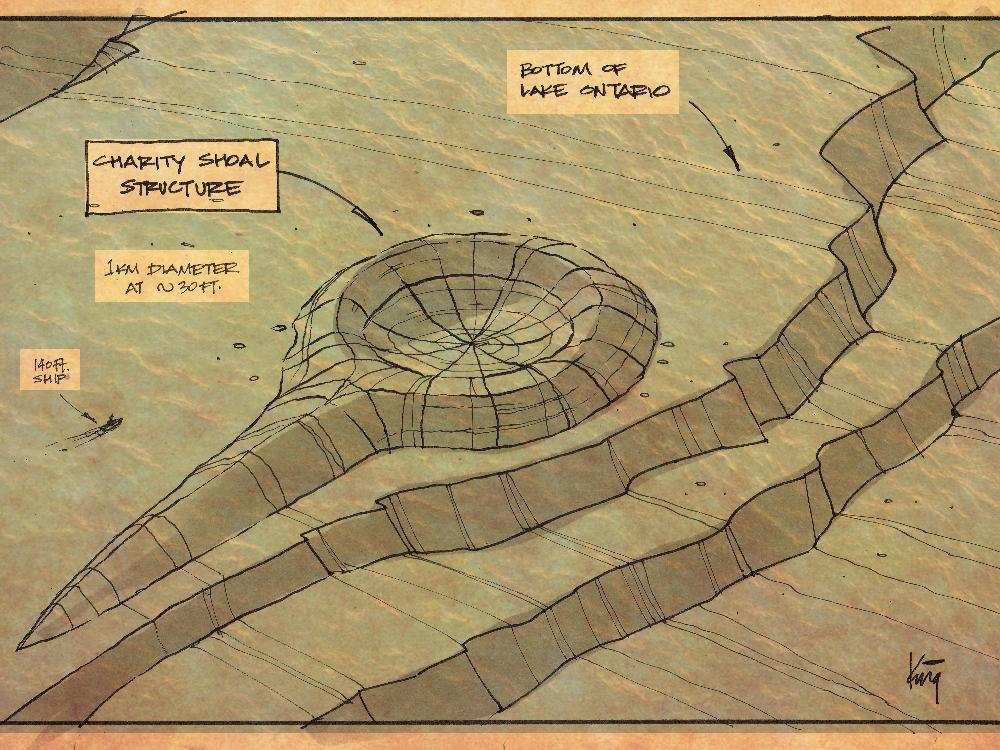
That would put the underwater structure at about 460 million years of age. The 2013 USRA study conducted a detailed geophysical survey of the structure, creating a 2-D magnetic model to try to evaluate its origin. Their research shows that the underwater structure is defined by a ring-like magnetic high and central magnetic low, with the total field magnetic anomaly being quite large, which cannot be accounted for.
The study then states that the anomaly’s “large magnitude indicates a deep basin and/or demagnetization effects in the Precambrian basement rocks below the structure.” The study concludes the structure is “consistent with a meteorite impact.”
If this is the case, then the mineral deposits or deformation of the earth’s surface from a 460-million-year-old meteor impact could possibly give us further answers.
Richard Herd, retired curator of the National Meteorite Collection of the Geological Survey of Canada, states the impact of such a meteor could “depress the earth’s crust and have brought up molten material from inside.” Herd also explains that meteors are of two types: stony and iron-nickel meteor, the latter being parts of small planets from when the solar system was formed.
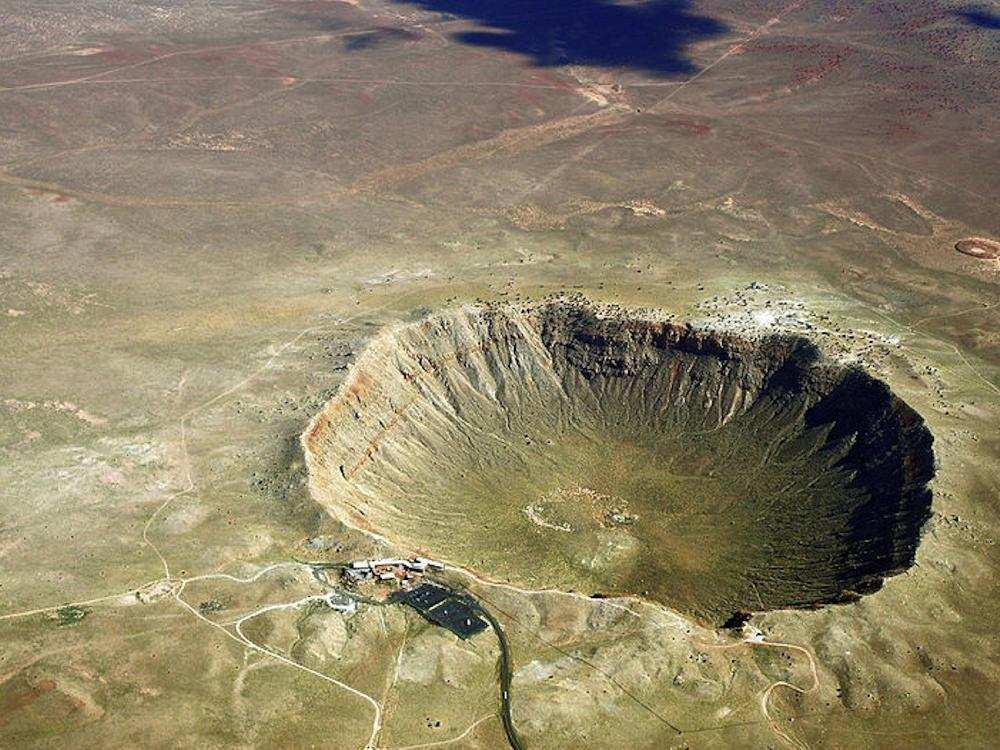
If the structure is indeed a meteor impact crater, it would rival the Barringer Crater in Arizona, a structure of the same size with similar properties to the Charity Shoal Structure. The Arizona crater was formed when a nickel-iron meteorite about 160 feet in diameter struck the Earth. An underwater study of Charity Shoal is necessary to provide the physical evidence of what the structure actually is and if it is indeed emitting a strong enough magnetic field to affect the navigational instruments of nearby vessels.
Meanwhile, the legend of the Marysburgh Vortex continues. In 2013, an unmanned sailboat was spotted drifting off the southern shore of Prince Edward County. A recovery crew was dispatched and, according to the local newspaper The County Weekly News, the 32-foot sail boat Persnickety had last sailed out of Sodus Bay, N.Y. The boat was found with all sails up, no signs of trouble and, after a closer inspection by authorities, the operator’s drivers licence, money, food and ice in a cooler were found intact on board. A three-day search for the missing operator was unsuccessful and the reason for the disappearance remains unsolved.
Perhaps this unique crater on the lake floor is composed of meteorite minerals that affect the earth’s natural magnetic fields and in turn displace compass readings of nearby vessels, sending them off course into uncharted shoals. With the advent of GPS and improved navigational aids, the frequency of ships disappearing has certainly diminished, but until what lies beneath is studied in greater detail, it seems the Marysburgh Vortex will continue to be a source of myster
Originally posted 2015-10-22 06:23:55. Republished by Blog Post Promoter

